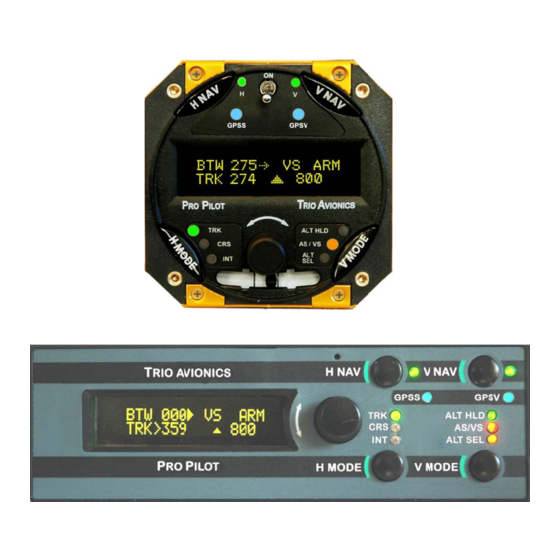
Trio Avionics Pro Pilot Autopilot System Manuals
Manuals and User Guides for Trio Avionics Pro Pilot Autopilot System. We have 3 Trio Avionics Pro Pilot Autopilot System manuals available for free PDF download: Operation Manual, Operation And Installation Manual, Operation Manuals
Trio Avionics Pro Pilot Operation Manual (89 pages)
for Experimental Aircraft
Brand: Trio Avionics
|
Category: Autopilot System
|
Size: 8 MB
Table of Contents
-
Operation11
-
Operation13
-
Waypoint23
-
Dis23
-
Trn23
-
Spd24
-
Loss of GPS30
-
Trim Alerts41
-
Approaches43
-
Adding Fuel52
-
Servo Gains57
-
Trim Motors77
-
AUTO Enable80
-
Operation81
-
Fault Modes82
-
Alerts86
-
Warnings86
-
Alarms86
Advertisement
Trio Avionics Pro Pilot Operation And Installation Manual (83 pages)
Brand: Trio Avionics
|
Category: Autopilot System
|
Size: 3 MB
Table of Contents
-
-
Operation13
-
-
-
-
Waypoint22
-
-
-
-
-
Chapter 14
65 -
-
Trio Avionics Pro Pilot Operation Manuals (51 pages)
Brand: Trio Avionics
|
Category: Avionics Display
|
Size: 1 MB
Table of Contents
-
-
-
Waypoint22
-
-
-
Trim Alerts40
-
Advertisement
Advertisement


